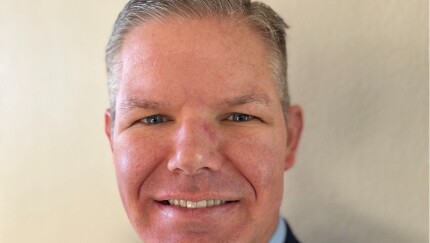My new client sat facing me in my office. Widowed for nearly 20 years, the woman and her husband had come to the United States from the Philippines as a young couple, bringing a newborn daughter and a desire for a better life.
Thanks to a lifetime of thrift and hard work, along with a substantial death benefit from her husband’s life insurance, she had accumulated a sizable asset base. Now in her 80s, she was worried about her daughter’s future and not sure what to do with her portfolio. She had come to me for help.
I was proposing a significant shift. My client’s English was still somewhat limited and as I moved carefully from one point to the next, I was unsure how much of my presentation was getting across. I wanted to communicate not only the importance of properly allocating her assets, but also the more complicated point of where her assets should be located to provide the maximum benefit, not only for her, but also for her daughter, who is now approaching retirement herself.

As I concluded, I looked into my client’s face and, to my surprise, saw a single tear sliding down her cheek. “What have I said?” I asked myself, trying to calm the panic rising in my chest. “How have I upset her?” I took a deep breath and gave her my most calming smile. “Do you understand what I’m suggesting? Is there something that I need to go over more carefully?” I asked.
She looked at me, slowly shook her head and smiled. “I understand. You are showing me a way to help my daughter. I am very grateful.”
Let me provide more details. The client is a thriving retiree with a dependable income stream from a defined benefit pension plan. She also has IRA accounts, both traditional and Roth. Finally, she has assets in a standard living trust, which is fully taxable. The trust holds not only invested assets, but also the deed to her home. She lives well within her means, so the investment portfolio has generally continued to accumulate.
As I reviewed her current portfolio, it became obvious that her asset allocation had been neglected for some time by previous advisors. This elderly woman held 80% stocks. Additionally, some 25% of holdings were concentrated in a single, highly appreciated equity. Obviously, some reallocation of assets was long overdue. Because the IRA accounts held mutual funds, it was simple to reallocate them into a much more conservative framework of mostly fixed income with some equity exposure for mild growth potential. In the tax-favored environment, we didn’t need to be concerned about capital gains liabilities.
The large concentration of highly appreciated equities, however, was located in the holdings of the trust. Without other assets to offset the imbalance, I initially expected to begin gradually reducing this position to reallocate the assets in a way that better reflected my client’s advanced age and need for stability.
Yes, AI is saving many advisors time and helping them reach prospects. But some say the rapid rate of adoption and automation could put them out of a job in the future.
Brett Griffin was given two months' notice that he would lose his job when Charles Schwab closed the office where he was working in Temecula, California. Now the firm accuses him of using some of that time to help move client data to a rival RIA.
Blake Roberts served as the Deputy General Counsel of the U.S. Department of Commerce from 2022 to 2025. He is a partner in the Washington office of Eversheds Sutherland.
But then, I learned that the client had made arrangements, in coordination with her daughter, to sell her home, place the proceeds in the trust and move in with her daughter. This is when I realized I had an important choice to make. The path of least resistance would have been to simply invest the home sale proceeds to complement the rest of the holdings. I could do a mix of high-quality, medium- to short-term municipal bonds, since the trust is taxable, and a small representation of equities to maintain growth potential and a hedge against inflation. But as I considered the client and the obvious importance she placed on providing for her daughter, I began to wonder if I was missing something.
The daughter was not my client, but she certainly had a vital interest in how these assets were positioned and especially in how they would perform over time. Her mother had a secure income stream and actually made little use of the assets to fund retirement. And it was obvious from my conversations with the client that the needs of her daughter were constantly on her mind.
Further analysis and modeling confirmed that the daughter’s interests would be better served by holding assets with more aggressive growth characteristics in the Roth IRA. Given the overwhelming likelihood of the daughter’s longer lifespan and the tax-free nature of future withdrawals from the Roth account, this would offer several advantages, not least of which was my client’s ability to help provide for the long-term financial security of her only child.
I decided to present this more complex recommendation to the client. I carefully explained the principles of proper diversification, and made my case for reorienting the asset allocation of the Roth IRA into holdings with more growth potential. I told her my motivation for doing so: providing a greater benefit for her daughter. My client happily — and tearfully — agreed.
We owe it to our clients to think beyond the obvious answers — and to carefully consider the next generation. Baby boomers are expected to transfer some $30 trillion in assets over the next several decades in North America alone, according to
Myclient will probably never understand the finer points of regression analysis, but she clearly understands that I will help her accomplish what is most important to her.








